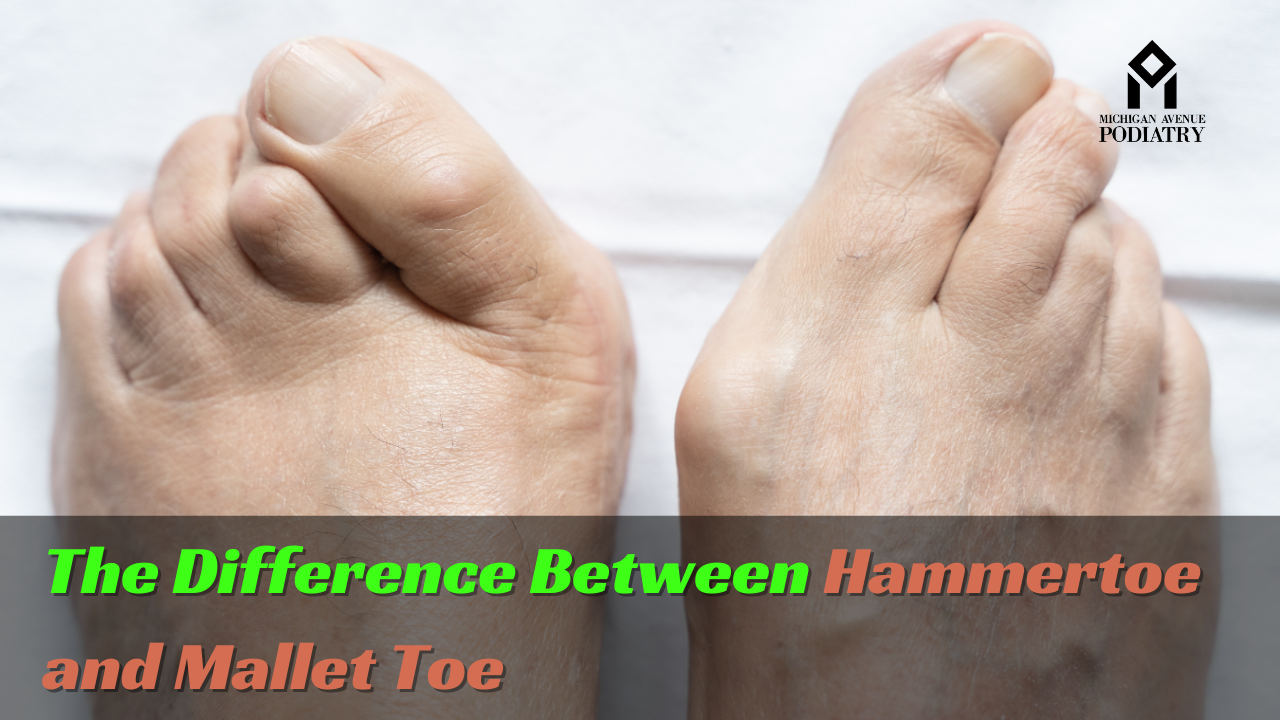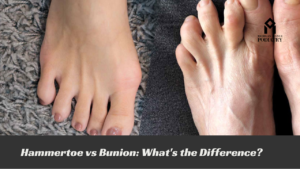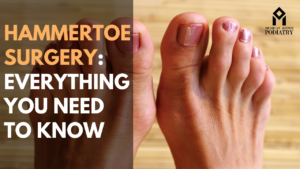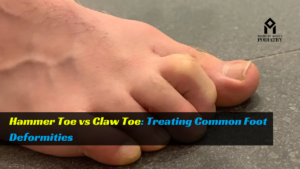Foot deformities can cause discomfort and affect mobility, yet many people may not be familiar with the specific conditions that can cause them. Two such conditions, hammertoe and mallet toe, are often confused due to their similar names and symptoms. In this article, we’ll delve into the key differences between hammertoe and mallet toe, their causes, symptoms, and available treatments, with a focus on when to seek help from a podiatrist.
Difference Between Hammertoe and Mallet Toe
What is Hammertoe? Hammertoe is a deformity that affects one or more toes, usually the second, third, or fourth toe. It is characterized by an abnormal bend in the middle joint of the toe, causing it to resemble a hammer. This condition can be flexible or rigid, depending on the severity.
What is Mallet Toe? Mallet toe, on the other hand, affects the joint at the end of the toe, causing it to bend downwards, resembling a mallet. Like hammertoe, mallet toe can also be flexible or rigid, and it commonly affects the second toe.
Causes of Hammertoe and Mallet Toe:
- Genetics: Both hammertoe and mallet toe can be inherited.
- Footwear: Tight, narrow shoes that crowd the toes can exacerbate these conditions.
- Muscle imbalances: Weak or tight muscles in the foot can lead to toe deformities.
- Trauma: Injuries to the toes can cause them to bend abnormally over time.
Symptoms:
- Pain or discomfort when wearing shoes.
- Corns or calluses due to friction and pressure.
- Difficulty flexing or straightening the affected toe.
- In severe cases, open sores or ulcers may develop.
Diagnosis: A podiatrist can diagnose hammertoe or mallet toe through a physical examination of the foot and toes. They may also order X-rays to assess the extent of the deformity and rule out other underlying conditions.
Also Read
Treatment Options:
- Footwear modification: Wearing shoes with a wide toe box can help relieve pressure on the toes.
- Orthotic devices: Custom-made orthotics can provide support and correct imbalances in the foot muscles.
- Toe exercises: Stretching and strengthening exercises prescribed by a podiatrist can improve flexibility and muscle strength.
- Splinting or taping: These techniques can help straighten the affected toes.
- Surgery: In severe cases that do not respond to conservative treatments, surgery may be necessary to realign the toes and correct the deformity.
When to See a Podiatrist: If you experience persistent pain, difficulty walking, or notice changes in the appearance of your toes, it’s important to consult a podiatrist. They can provide an accurate diagnosis and recommend appropriate treatment options based on your specific needs.
Prevention:
- Wear properly fitting shoes with a wide toe box.
- Avoid high heels and shoes with pointed toes.
- Perform regular toe exercises to maintain flexibility and strength.
- Pay attention to foot pain and address any issues promptly.
Conclusion: While hammertoe and mallet toe may share similarities, understanding their distinct characteristics and causes is crucial for effective treatment. By consulting a podiatrist and following their recommendations, individuals can alleviate pain, improve mobility, and prevent further progression of these toe deformities. Remember, early intervention is key to achieving the best possible outcomes for foot health.
In summary, hammertoe and mallet toe are foot conditions that can cause discomfort and affect mobility. By understanding their differences and seeking help from a podiatrist, individuals can effectively manage these conditions and maintain optimal foot health.




